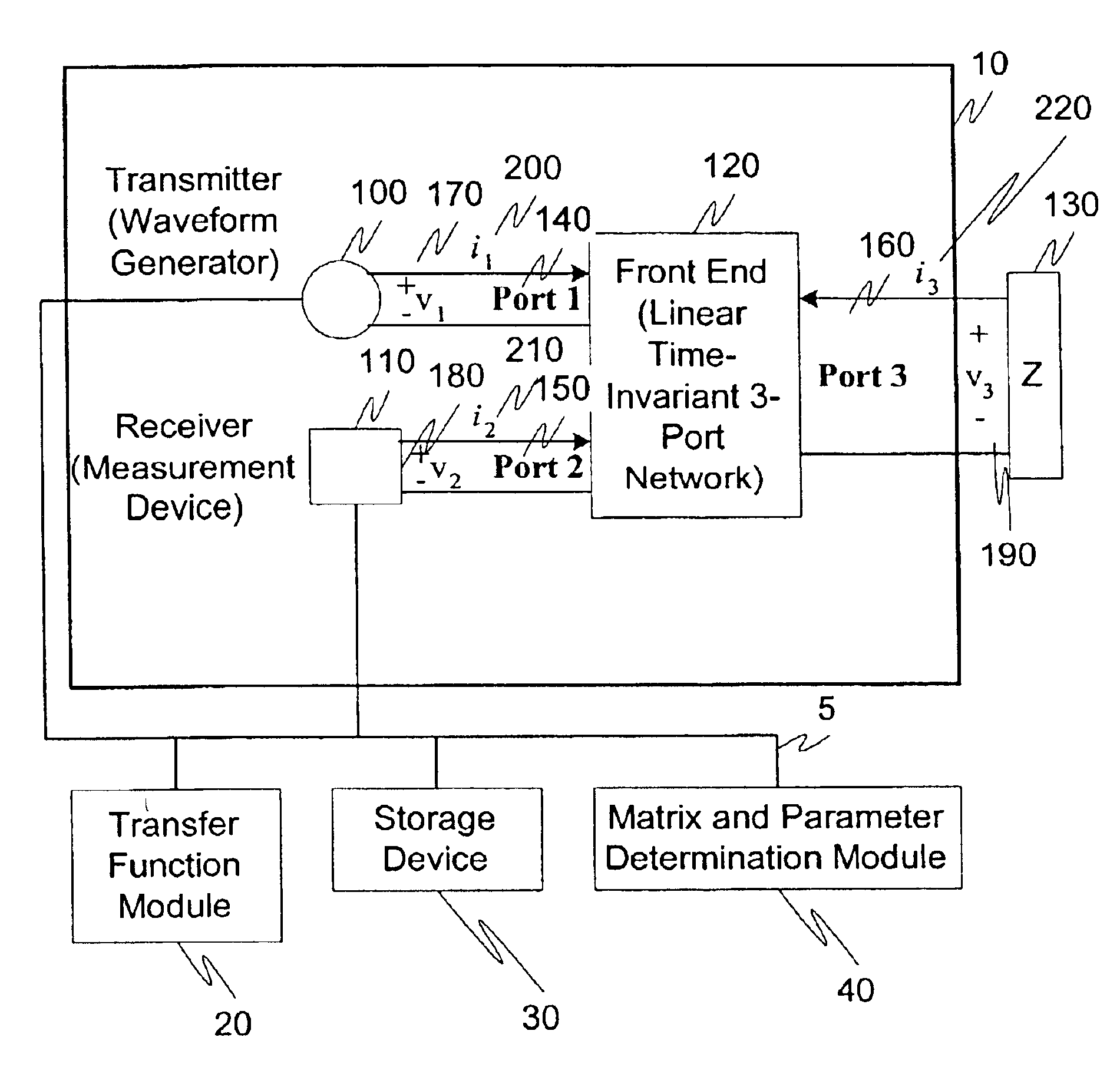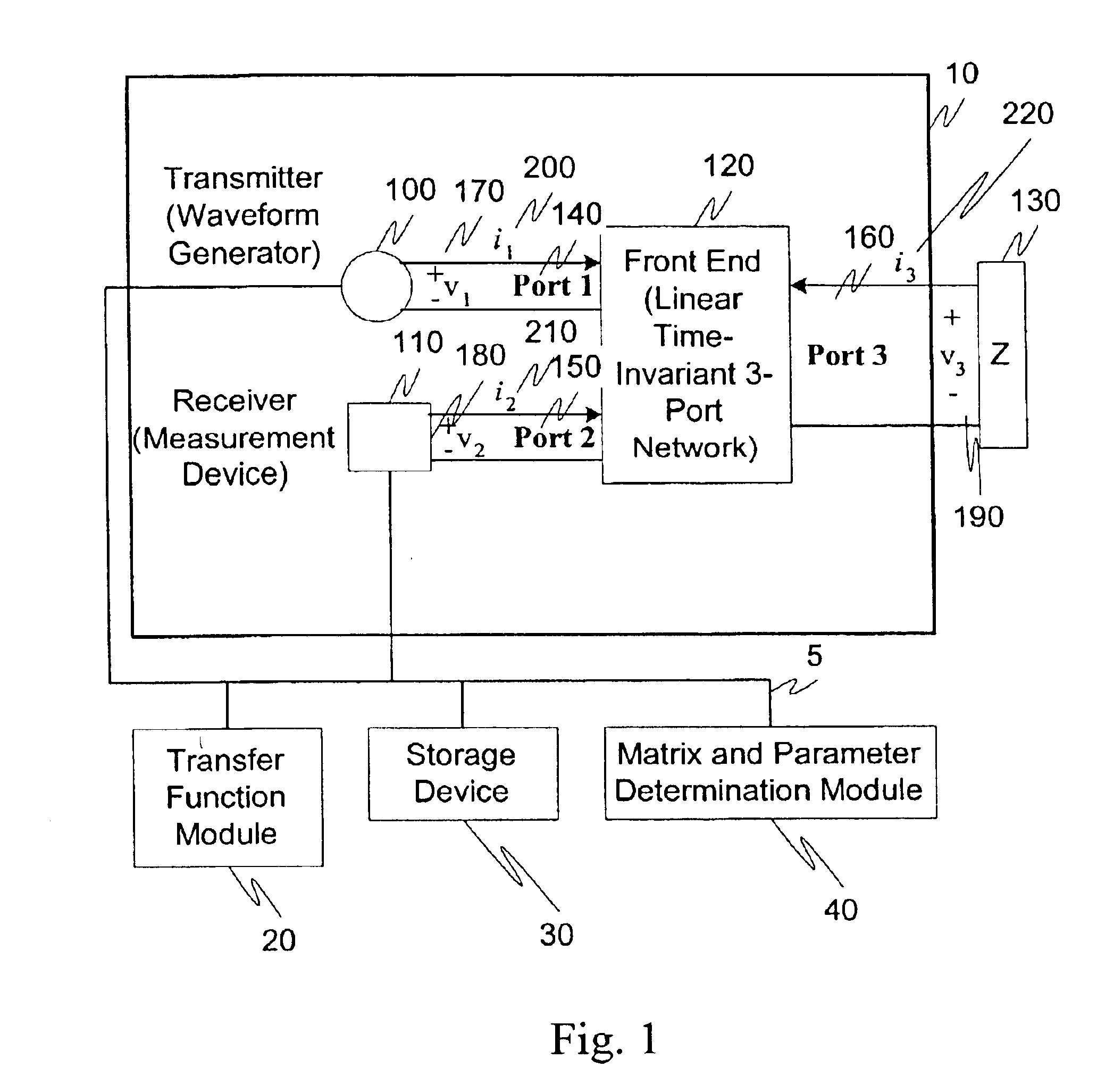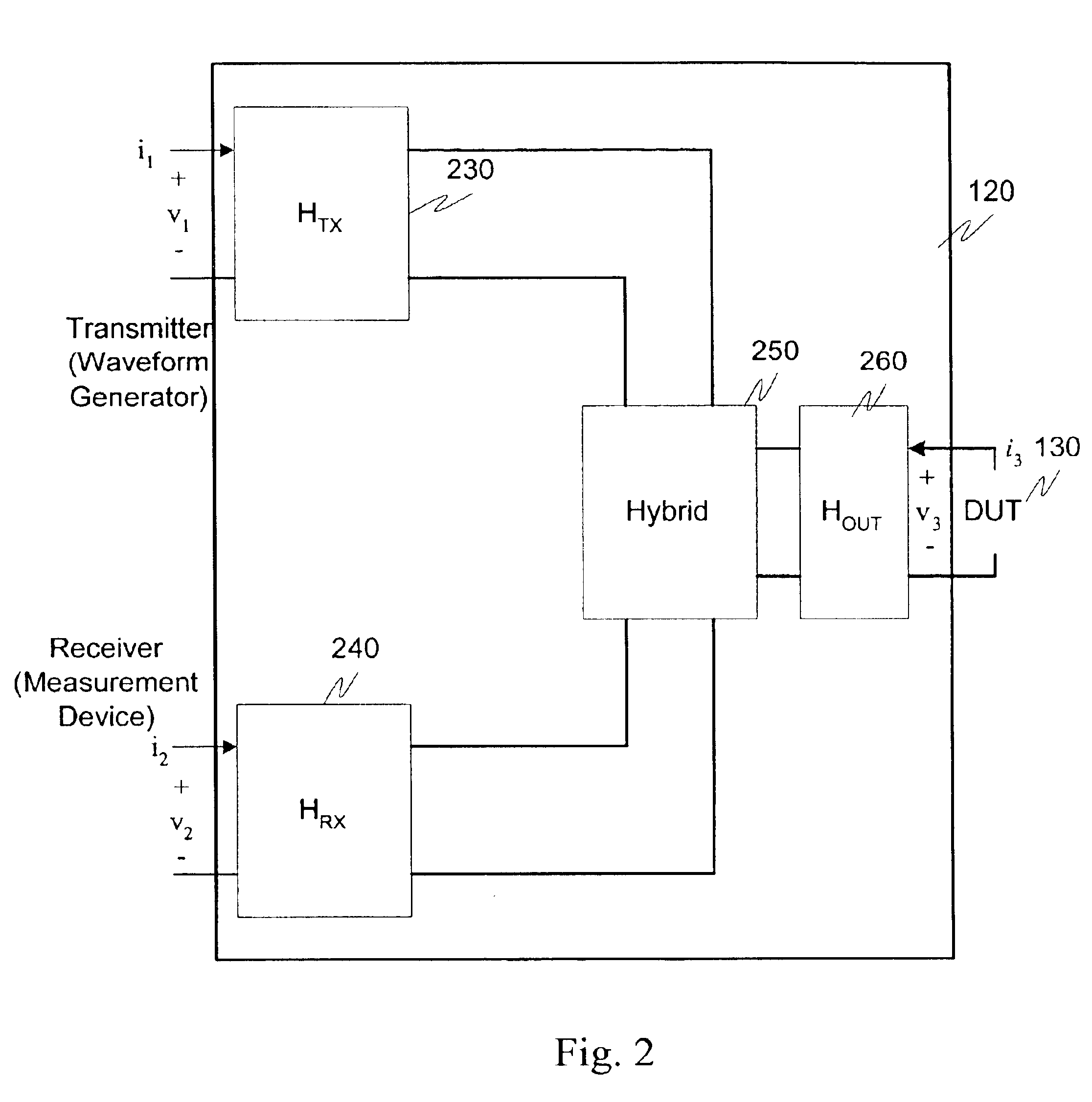Modeling and calibrating a three-port time-domain reflectometry system
a time-domain reflectometry and three-port technology, applied in the field of time-domain reflectometry, can solve the problems of imperfect knowledge, distorted information-bearing tdr signals, and components used may not be as high as dedicated tdr systems, and achieve the effect of effective conversion
- Summary
- Abstract
- Description
- Claims
- Application Information
AI Technical Summary
Benefits of technology
Problems solved by technology
Method used
Image
Examples
Embodiment Construction
The exemplary embodiments of this invention will be described in relation to the application of a model to describe the TDR front-end an a method for determining the parameters of the model. However, it should be appreciated, that in general, the systems and methods of this invention will work equally well for modeling any linear, and time-invariant three port TDR system.
The exemplary systems and methods of this invention will also be described in relation to a TDR system that can be used in conjunction with a DUT such as a twisted-pair transmission line. However, to avoid unnecessarily obscuring the present invention, the following description omits well-known structures and devices that may be shown in block diagram form or otherwise summarized.
For the purposes of explanation, numerous details are set forth in order to provide a thorough understanding of the present invention. It should be appreciated however, that the present invention may be practiced in a variety of ways beyond...
PUM
 Login to View More
Login to View More Abstract
Description
Claims
Application Information
 Login to View More
Login to View More - R&D
- Intellectual Property
- Life Sciences
- Materials
- Tech Scout
- Unparalleled Data Quality
- Higher Quality Content
- 60% Fewer Hallucinations
Browse by: Latest US Patents, China's latest patents, Technical Efficacy Thesaurus, Application Domain, Technology Topic, Popular Technical Reports.
© 2025 PatSnap. All rights reserved.Legal|Privacy policy|Modern Slavery Act Transparency Statement|Sitemap|About US| Contact US: help@patsnap.com



